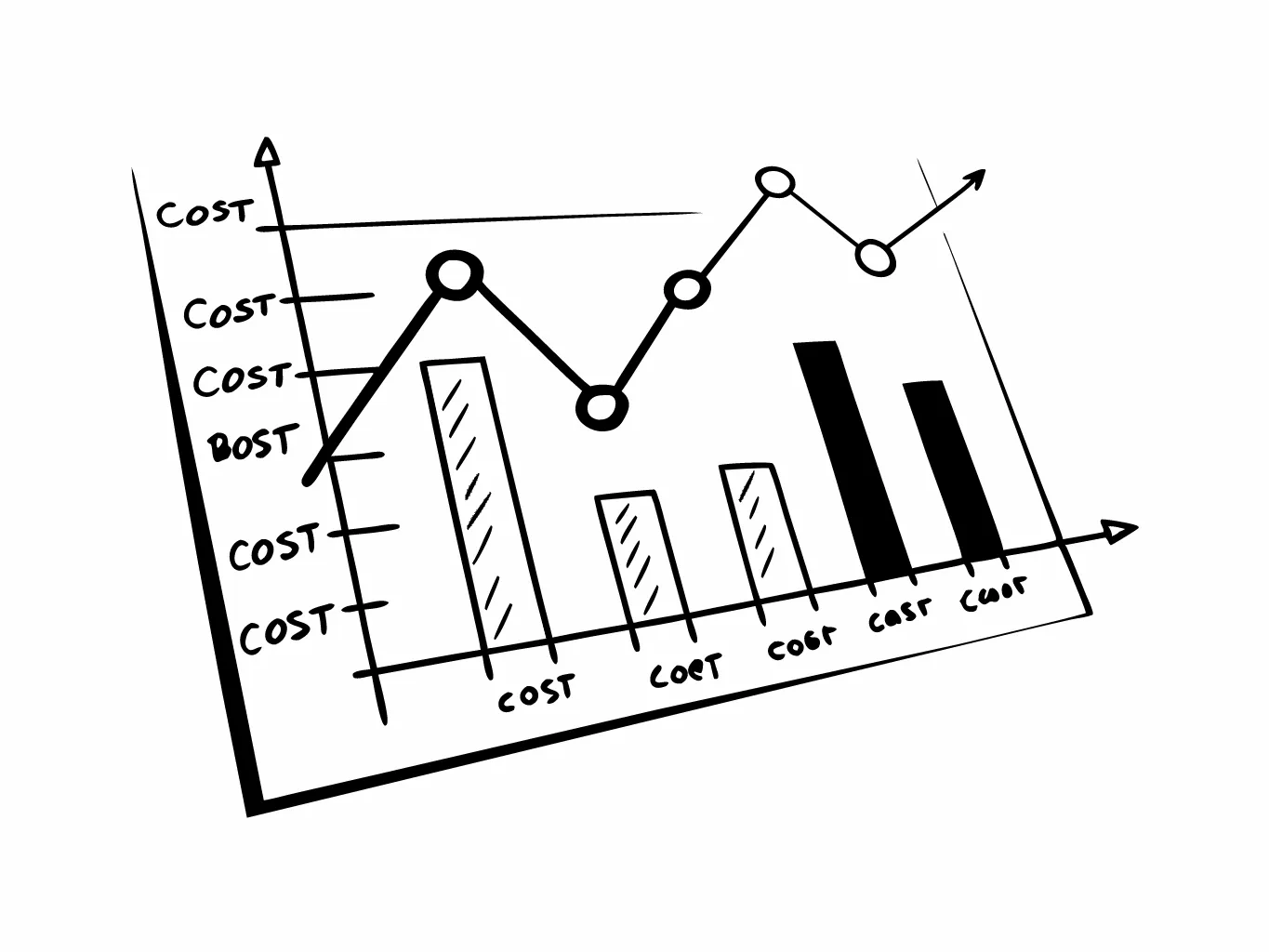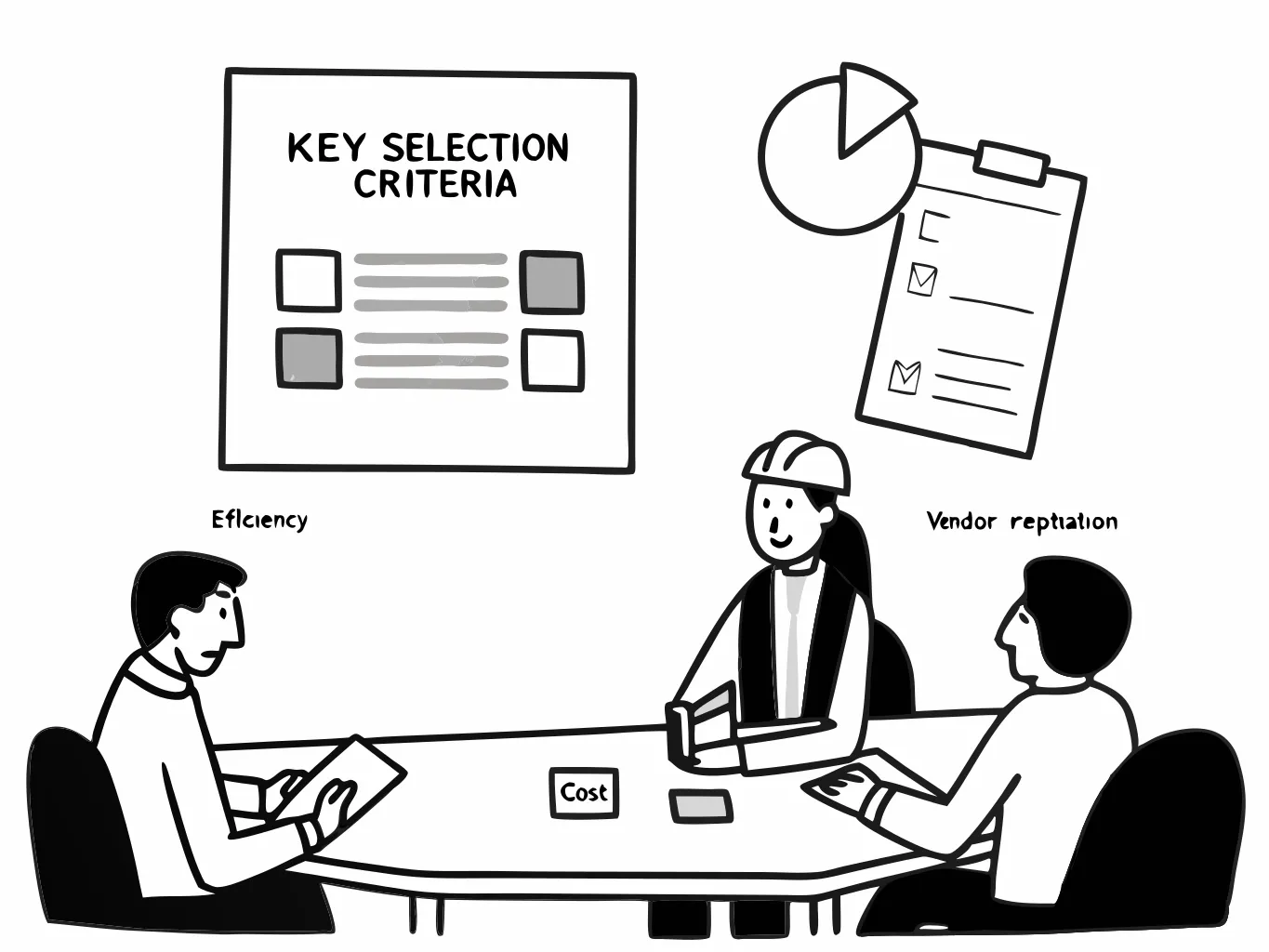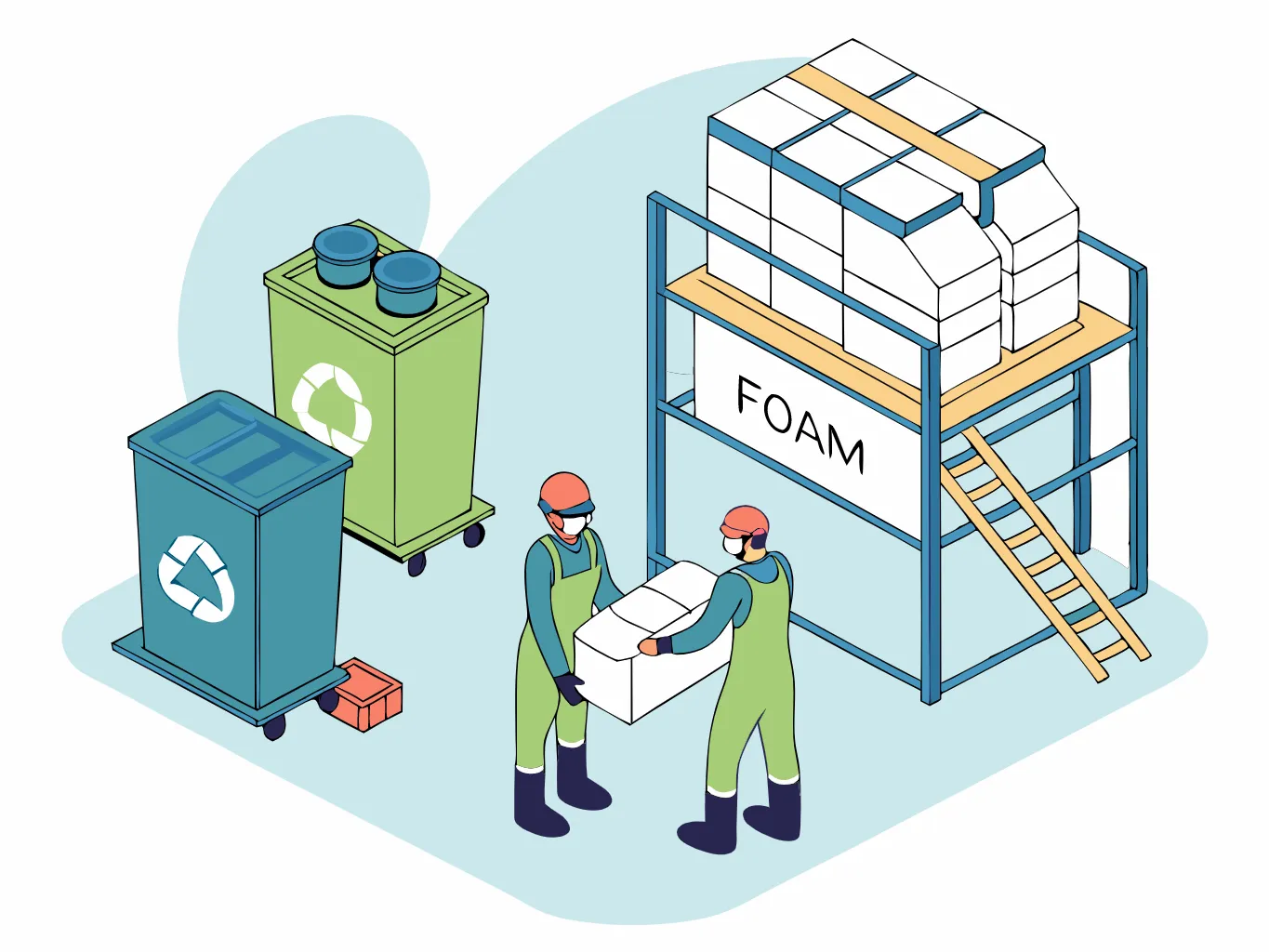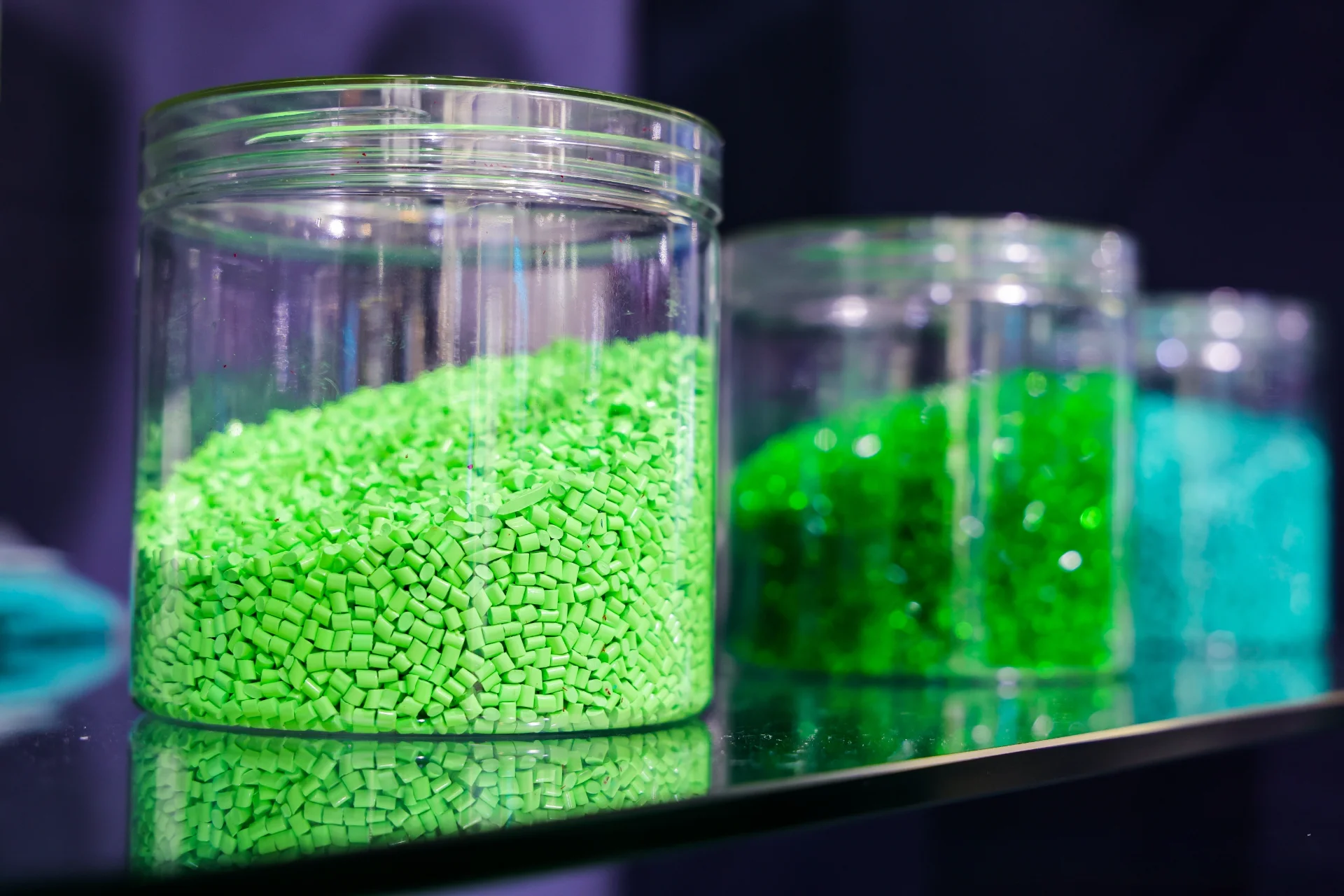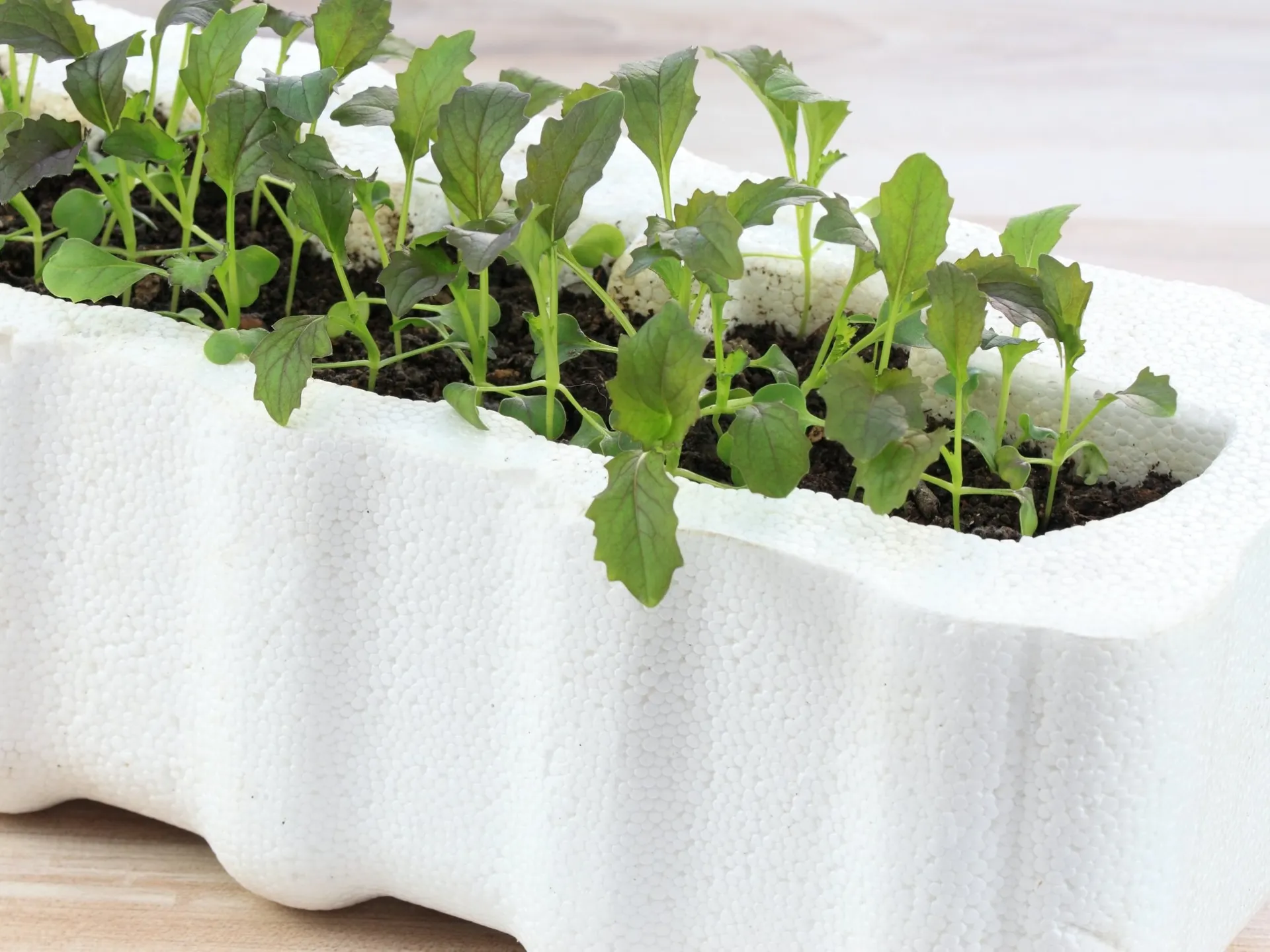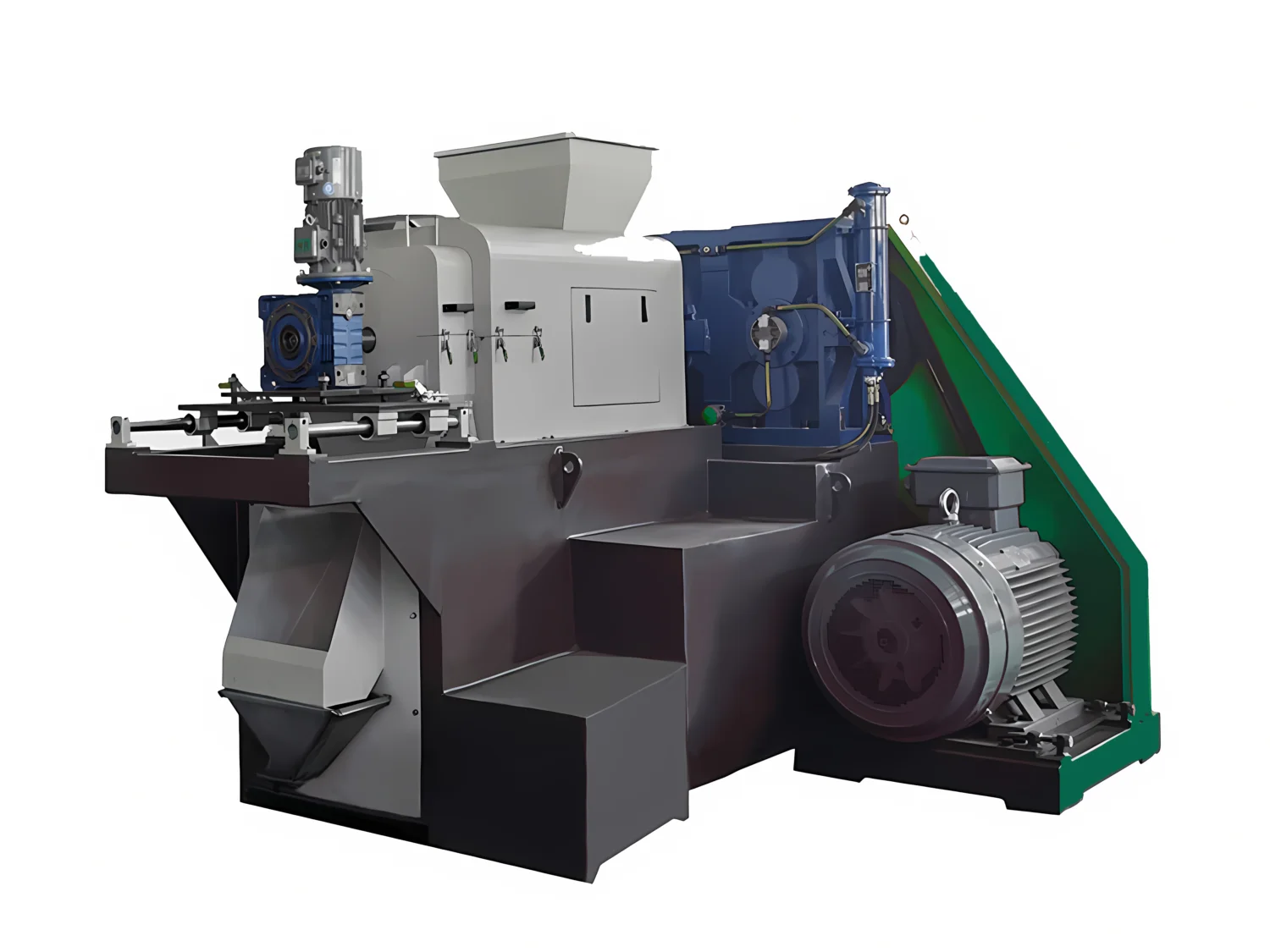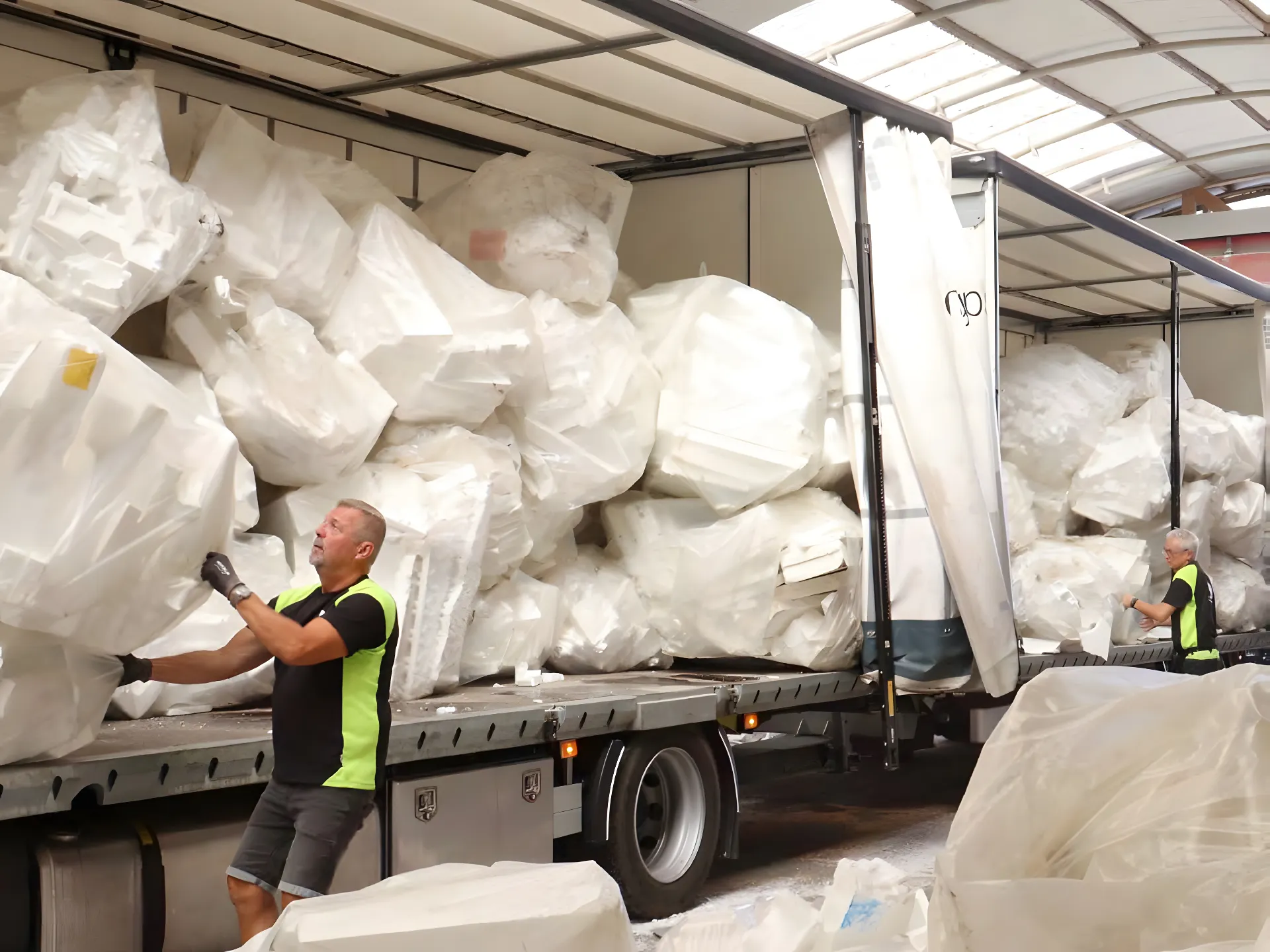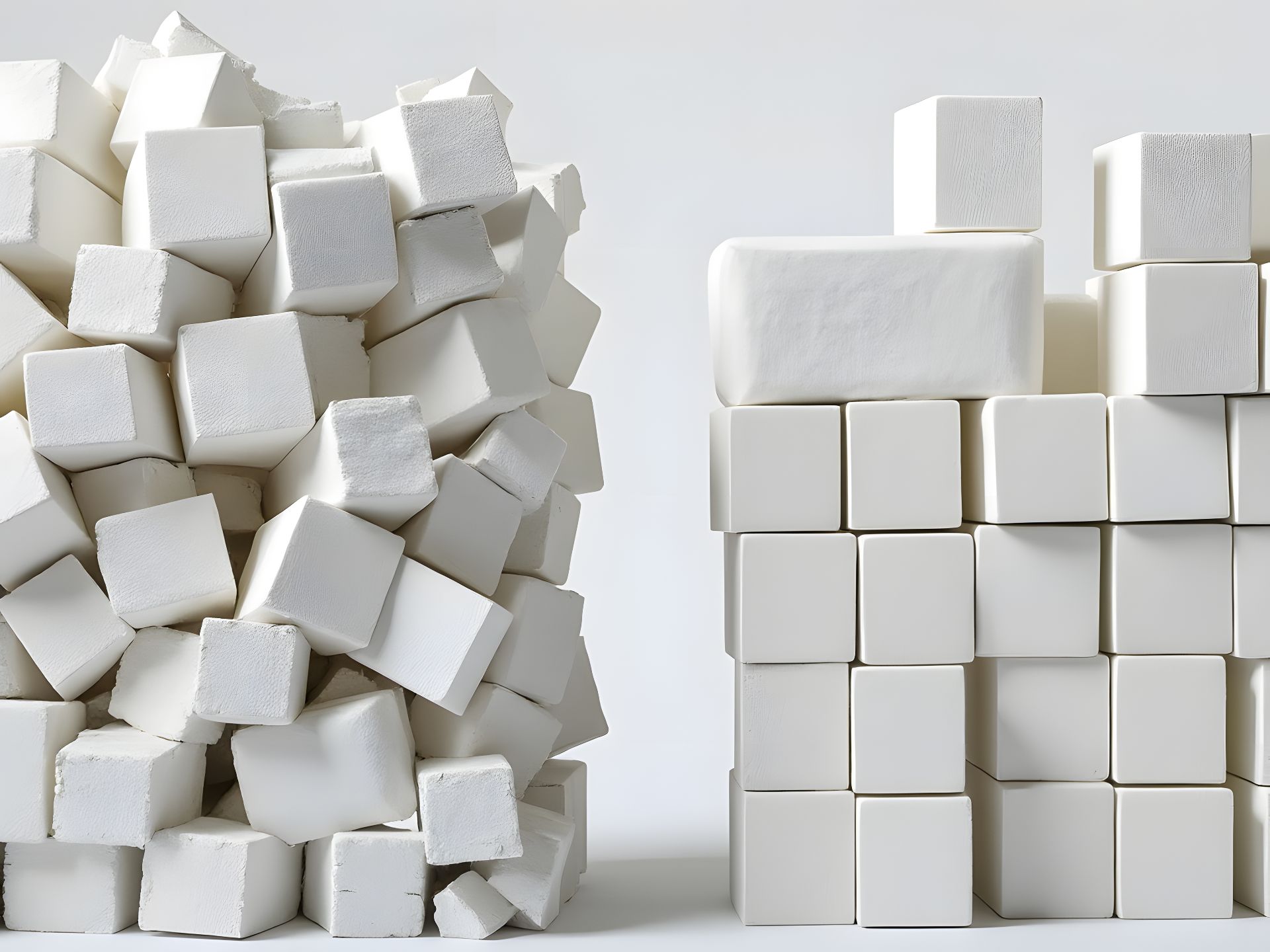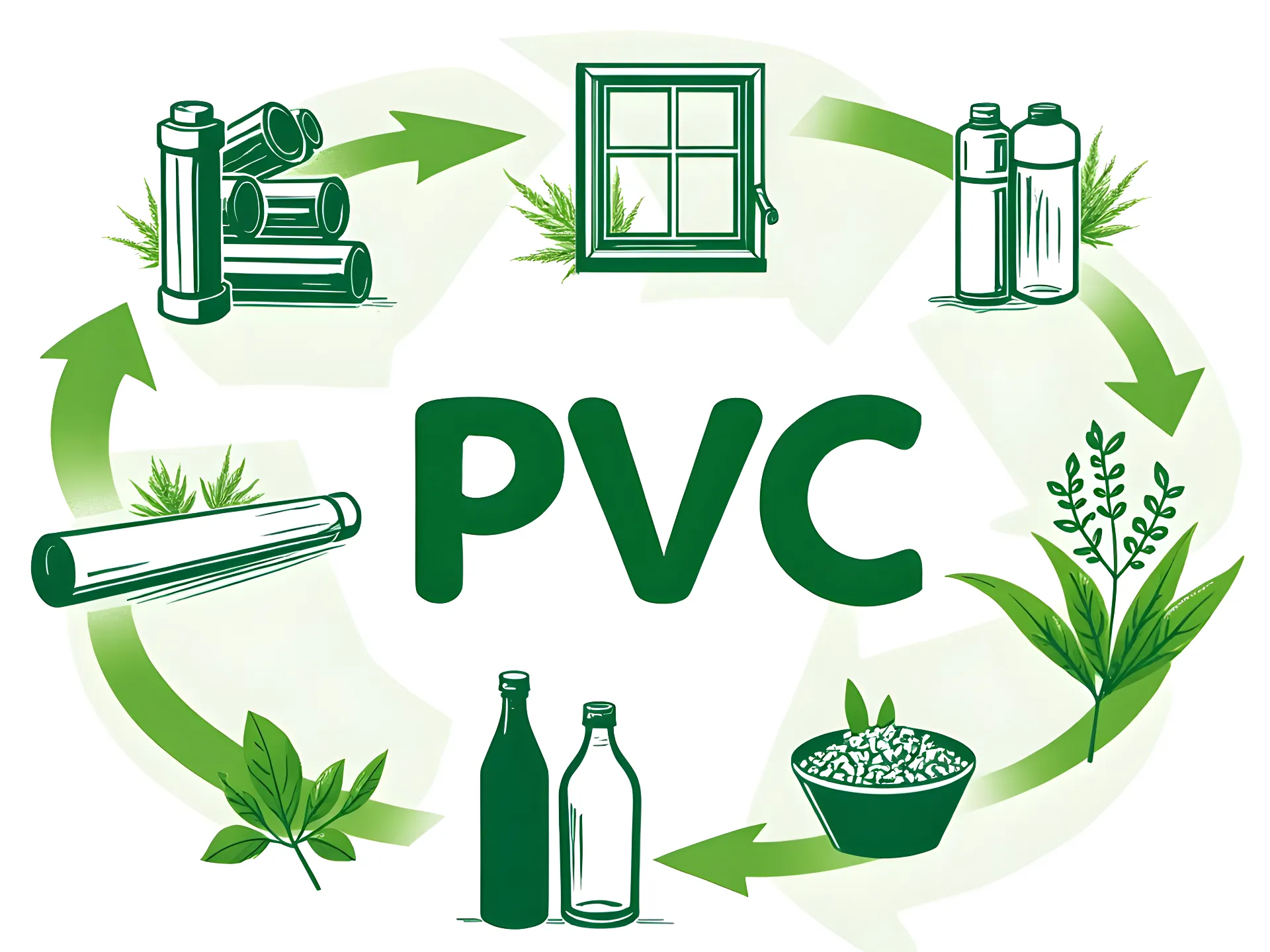Recycling News
Foam waste represents one of the most challenging material streams in modern manufacturing—bulky, costly to dispose of, and increasingly difficult to justify in an era of circular economy mandates. Yet this challenge presents a remarkable opportunity. Investing in foam recycling machinery transforms what was once a pure cost center into a profitable, sustainable operation. At Energycle, we've helped manufacturers across industries achieve rapid ROI while meeting their environmental commitments.
This comprehensive analysis examines the true costs, quantifiable benefits, and strategic considerations that inform smart foam recycling investments.
Understanding Your Investment: Equipment Costs and Options
Small-Scale Solutions for Growing Operations
Entry-level foam recycling machines, typically ranging from $3,000 to $10,000, serve businesses processing moderate foam volumes. These compact systems deliver immediate waste reduction and establish a foundation for expanding recycling capabilities as your operation grows.
Mid-Scale Equipment for Established Manufacturers
Manufacturers processing significant foam volumes typically invest $10,000 to $30,000 in mid-scale equipment. These machines balance capacity, efficiency, and cost-effectiveness. Our EPS Foam Cold Press Machine exemplifies this category—delivering up to 50:1 compression ratios without the energy costs and maintenance demands of hot-melt systems.
Industrial-Scale Systems for High-Volume Operations
Large manufacturers and material recovery facilities require robust, high-throughput systems exceeding $100,000. Energycle's industrial EPS recycling machines feature advanced automation, dual-technology options (hot melt and hydraulic compression), and processing capacities up to 500 kg per hour. These systems are engineered for continuous operation and deliver the lowest per-kilogram processing costs.
Beyond the Purchase Price
Smart buyers evaluate total cost of ownership, which includes:
- Installation and commissioning: Energycle provides turnkey installation services, ensuring optimal placement and integration with your existing workflow
- Preventive maintenance: Our equipment features robust construction and accessible components that minimize service requirements
- Energy efficiency: Cold press technology uses significantly less power than thermal densification, reducing ongoing operating costs
- Training investment: We include comprehensive operator training to maximize equipment performance from day one
The Compelling Financial Returns
Eliminate Waste Disposal Expenses
Foam's extreme volume-to-weight ratio makes it extraordinarily expensive to handle and dispose of. Transportation costs spiral when you're essentially paying to haul air. Energycle's compression technology reduces foam volume by 50:1 to 90:1, immediately cutting disposal and hauling fees by comparable percentages. Manufacturers commonly save $40,000 to $120,000 annually on waste management alone.
Generate Revenue from Recycled Materials
Densified foam blocks and ingots command strong market prices from remanufacturing operations. These buyers convert recycled EPS into construction materials, picture frames, crown molding, park benches, and insulation panels. Energycle customers typically generate $30,000 to $60,000 in annual revenue from foam sales that previously cost money to discard.
One of our appliance distribution clients generated $40,000 in recycled foam revenue within their first six months of operation—transforming their waste management budget from red to black.
Reclaim Valuable Facility Space
Loose foam consumes enormous storage areas. After compression, that mountain of foam reduces to a single pallet of neat, stackable blocks. Manufacturers reclaim hundreds or thousands of square feet of valuable warehouse space for productive use. The operational efficiency gains alone often justify the equipment investment.
Reduce Labor and Handling Costs
Manual foam handling is inefficient and messy. Automated densification eliminates repeated trips to dumpsters, reduces cleanup time, and allows staff to focus on value-adding activities. Our customers report 60-80% reductions in foam-handling labor.
Environmental Leadership Creates Competitive Advantages
Meet Regulatory Requirements Proactively
Extended producer responsibility regulations and landfill restrictions continue tightening globally. Investing in foam recycling positions your operation ahead of regulatory curves while avoiding potential fines and operational disruptions.
Achieve Corporate Sustainability Commitments
Foam densification delivers measurable environmental metrics for sustainability reporting: tons diverted from landfills, carbon footprint reduction, and circular economy participation. These credentials enhance brand reputation and appeal to environmentally conscious customers and partners.
Differentiate Your Business
Manufacturers demonstrating genuine environmental stewardship gain competitive advantages in procurement processes. Many large buyers now prioritize suppliers with verified recycling programs and circular economy practices.
Operational Benefits Beyond Cost Savings
Flexible Processing Capabilities
Modern foam recycling equipment handles multiple material types—EPS, EPE, XPS, and EPP—giving you flexibility as your product mix evolves. Energycle machines process everything from rigid EPS packaging blocks to flexible foam padding without equipment changes.
Clean, Safe Operations
Our cold press technology operates without melting, eliminating fumes, odors, and thermal hazards. This makes equipment suitable for installation in diverse facility locations without specialized ventilation or environmental controls.
Proven Reliability
Energycle designs equipment for industrial environments and continuous operation. Heavy-duty hydraulic systems, industrial-grade motors, and robust structural components ensure years of dependable service with minimal downtime.
Real-World Results from Energycle Customers
UK Foam Manufacturer Achieves 450% Capacity Increase
Foam Products Ltd. invested £500,000 in an integrated EPS recycling and remanufacturing system. The operation increased production capacity by 450% while simultaneously reducing energy consumption and water usage by 30%. The environmental benefits enhanced their market position while the capacity expansion drove rapid ROI.
Central American Builder Transforms Waste Management
SISTEGUA, a construction material manufacturer in Guatemala, installed an Energycle EPS compactor to address growing foam waste from their production lines. Beyond solving their waste problem, the investment enabled a public recycling awareness campaign, strengthening community relationships while generating revenue from densified foam sales.
US Appliance Distributor Turns Waste into Profit
An appliance warehouse facing $1,000 weekly foam disposal costs implemented Energycle densification equipment. Within six months, they generated $40,000 in foam sales revenue while reclaiming 2,000 square feet of warehouse space and eliminating disposal fees entirely. The equipment paid for itself in under one year.
Strategic Considerations for Maximum ROI
Calculate Your Specific Payback Period
Return on investment depends on your current disposal costs, foam volume, and local market prices for recycled material. Energycle provides detailed financial analysis showing your projected payback timeline—typically 12 to 24 months for operations with significant foam waste streams.
Our engineering team will assess your specific volumes and costs to project precise savings and revenue potential before you commit to purchase.
Secure Downstream Markets for Recycled Foam
The profitability of foam recycling depends on reliable buyers for your densified blocks. Energycle maintains relationships with recycling networks globally and can connect you with regional buyers. We help customers establish purchase agreements before equipment installation, ensuring immediate revenue streams.
Plan for Operational Integration
Successful foam recycling requires minimal but important planning. Consider equipment placement for efficient material flow, power requirements (typically 380V three-phase), and staff training schedules. Energycle manages these details during installation, ensuring smooth startup and rapid productivity.
Invest in Training and Best Practices
Equipment performance depends on proper operation. We provide comprehensive hands-on training covering operation procedures, routine maintenance, troubleshooting, and safety protocols. Your team will confidently maximize throughput and equipment lifespan.
Choosing Between Hot Melt and Cold Press Technology
Cold Press Advantages
Our hydraulic cold press systems compress foam using mechanical pressure alone—no heating required. This delivers several advantages:
- Lower energy consumption: 40-60% less power than hot melt systems
- Simpler maintenance: Fewer components and no heating elements
- Safer operation: No fumes, odors, or thermal hazards
- Faster installation: No special ventilation requirements
Cold press equipment suits most applications and delivers excellent compression ratios up to 50:1.
Hot Melt for Maximum Density
Hot melt densifiers achieve the highest compression ratios (up to 90:1) by heating and melting foam into extremely dense ingots. These systems maximize transportation efficiency for operations with very high volumes or remote locations where minimizing logistics costs is paramount.
Energycle offers both technologies, allowing us to recommend the optimal solution for your specific requirements and economics.
The Energycle Partnership Advantage
Comprehensive Equipment Support
We back every machine with responsive technical support, readily available spare parts, and regional service capabilities. When you choose Energycle, you gain a long-term partner invested in your recycling success—not just a one-time vendor.
Customized Solutions for Your Operation
Every facility has unique requirements. Our engineering team designs solutions matching your exact foam types, volumes, facility constraints, and downstream objectives. We configure equipment for your specific needs rather than forcing you into standard packages.
Proven Global Experience
Energycle serves manufacturers across six continents, from small regional operations to multinational corporations. Our equipment operates reliably in diverse environments and processes foam waste from countless industries. This experience ensures we anticipate and address potential challenges before they impact your operation.
Take Action on Your Foam Recycling Investment
The economics of foam recycling are compelling: eliminate disposal costs, generate new revenue, reclaim facility space, and strengthen your environmental credentials. For manufacturers producing significant foam waste, the question isn't whether to invest in recycling equipment, but how quickly you can implement it.
Energycle makes the decision straightforward with transparent financial analysis, proven technology, and comprehensive support. Our team will assess your specific situation, recommend the optimal equipment configuration, project your financial returns, and ensure successful implementation.
Contact our foam recycling specialists today for a complimentary consultation and customized ROI analysis. Let us show you exactly how foam recycling equipment will impact your bottom line while advancing your sustainability goals.
When you partner with Energycle, you're not simply purchasing machinery—you're investing in decades of recycling expertise, responsive support, and engineering excellence. We understand that your success depends on equipment that performs reliably, delivers promised economics, and adapts as your operation evolves.
Manufacturers worldwide trust Energycle to transform their foam waste challenges into competitive advantages. Your consultation is the first step toward joining them.
Foam waste presents a significant environmental challenge due to its bulky nature and slow degradation. Fortunately, foam recycling machines offer an innovative solution by converting this problematic waste into valuable, reusable materials. This comprehensive guide explores how these machines work and why they're essential for sustainable waste management.
Understanding the Foam Recycling Process
The transformation of foam waste into reusable materials involves a carefully orchestrated series of steps, each playing a crucial role in the overall recycling process.
Collection and Sorting: The Foundation of Effective Recycling
The journey begins with gathering foam materials from businesses, recycling centers, and collection points. This includes expanded polystyrene (EPS)—commonly known as Styrofoam—as well as other foam varieties used in packaging, insulation, and consumer products.
Proper sorting is absolutely essential at this stage. Different foam types require different processing methods, and contaminants like tape, labels, or mixed materials can significantly reduce recycling efficiency. Taking time to separate materials properly ensures smoother processing and higher-quality output.
Size Reduction: Making Bulk Manageable
Once sorted, the foam enters shredders or grinders that break it down into smaller pieces. This step addresses one of foam's biggest challenges: its extremely low density and bulky nature.
By reducing particle size, these machines create a more uniform material that's easier to handle in subsequent processing stages. Smaller particles also allow for better compression ratios during densification, ultimately improving the efficiency of the entire recycling operation.
Densification: The Critical Transformation
Densification represents the heart of foam recycling. Foam recycling machines use specialized compactors or densifiers that apply heat and pressure to dramatically reduce foam volume—often by 90% or more.
Some machines use thermal methods, applying controlled heat to soften and compress the foam. Others rely on mechanical compression, using powerful hydraulic systems to squeeze the material into dense blocks. This transformation is what makes foam recycling economically viable, as it reduces storage space requirements and transportation costs by up to 50 times.
Extrusion: Creating Raw Materials for Manufacturing
For polystyrene foam and certain other types, extrusion takes recycling a step further. These advanced machines melt the compacted foam and force it through specialized dies, creating uniform plastic pellets or custom profiles.
The resulting pellets match specifications for manufacturing applications, allowing them to be used as feedstock for new products. This process essentially returns the foam to its original raw material form, ready to begin its lifecycle again.
Output and Reuse: Closing the Loop
The final output from foam recycling takes several forms, each with specific applications:
Densified blocks or ingots serve as lightweight filler material in construction projects, soundproofing applications, and as spacers in shipping containers. Their uniform density and shape make them easy to work with and transport.
Plastic pellets become the foundation for new products, including picture frames, crown molding, office supplies, and even new foam products. Many manufacturers actively seek recycled foam pellets as a sustainable alternative to virgin materials.
Custom extruded profiles can be created directly for specific applications, eliminating the need for additional manufacturing steps and reducing overall production costs.
Types of Foam Recycling Equipment
Understanding the different machine types helps businesses select the right equipment for their needs.
Shredders and Grinders
These machines focus exclusively on size reduction and typically serve as the first step in larger recycling operations. They're ideal for facilities processing large volumes of mixed foam waste.
Compactors
Compactors use mechanical pressure to reduce foam volume without melting. They're perfect for businesses that generate foam waste regularly but may not have the space for full recycling lines. The compacted material can then be transported to facilities with more advanced processing equipment.
Densifiers
Densifiers combine heat and mechanical pressure to create extremely dense blocks or ingots. These machines offer higher compression ratios than cold compactors and produce output that's easier to store and transport over long distances.
Extruders
Extruders represent the most advanced foam recycling technology, melting and reshaping material into pellets or profiles ready for manufacturing. While they require higher upfront investment, they produce the highest-value output and are essential for businesses aiming to create closed-loop recycling systems.
Why Foam Recycling Matters
Environmental Protection
Foam waste occupies enormous space in landfills and can persist for hundreds of years without degrading. By recycling foam, we dramatically reduce the volume of waste requiring disposal and prevent harmful materials from accumulating in our environment.
Resource Conservation
Every ton of recycled foam reduces demand for virgin petroleum-based polymers. This conserves finite natural resources and reduces the environmental impact associated with extracting and processing raw materials.
Economic Opportunities
Recycling creates tangible economic value. Businesses can generate revenue from materials they previously paid to dispose of. The recycled foam market continues to grow, with increasing demand from manufacturers seeking sustainable materials.
Supporting Circular Economy Goals
Foam recycling machines help companies transition from linear "take-make-dispose" models to circular systems where materials continuously cycle through use, recovery, and remanufacturing. This approach aligns with global sustainability initiatives and increasingly stringent environmental regulations.
Key Considerations for Implementation
Equipment Selection
Choose equipment based on your specific foam types, processing volume, and space constraints. Consider whether you need a single machine or an integrated recycling line, and evaluate both capital costs and long-term operational efficiency.
Staff Training
Proper training ensures safe, efficient operation and maximizes equipment lifespan. Operators should understand sorting requirements, safety protocols, and basic troubleshooting procedures.
Regular Maintenance
Implement a preventive maintenance schedule to keep machines running smoothly. Regular cleaning, lubrication, and inspection prevent costly breakdowns and ensure consistent output quality.
Quality Control
Establish procedures for monitoring output quality. Consistent density, minimal contamination, and proper sizing ensure your recycled materials meet market specifications and command premium prices.
Frequently Asked Questions
What types of foam can be recycled in these machines?
Most foam recycling machines handle expanded polystyrene (EPS), extruded polystyrene (XPS), and polyethylene foam. Each machine type has specific capabilities, so it's important to match equipment to your foam types. Some advanced systems can process multiple foam varieties, while others specialize in specific materials for optimal efficiency.
How much space reduction can foam recycling machines achieve?
Modern foam recycling equipment typically reduces foam volume by 90-98%, depending on the machine type and processing method. Cold compactors generally achieve 40:1 to 50:1 compression ratios, while hot-melt densifiers and extruders can reach 90:1 ratios or higher. This dramatic reduction makes storage and transportation economically viable.
What is the ROI timeline for investing in foam recycling equipment?
Return on investment varies based on your foam waste volume, equipment costs, and local market conditions for recycled materials. Businesses processing significant foam volumes often see payback periods of 1-3 years through combined savings on disposal costs and revenue from selling recycled materials. Smaller operations may take longer but still achieve positive returns.
Can recycled foam match virgin material quality?
Yes, properly processed recycled foam can meet quality standards comparable to virgin materials for many applications. The key lies in proper sorting, contamination control, and processing parameters. While some high-specification applications still require virgin materials, recycled foam serves excellently in construction materials, new packaging, consumer products, and many manufacturing applications.
What are the main operating costs for foam recycling machines?
Operating costs include electricity (the largest variable cost), maintenance parts, labor, and occasional repairs. Energy-efficient models can process foam for just a few cents per pound. Regular preventive maintenance minimizes unexpected repair costs. Most businesses find that operational costs are more than offset by disposal savings and material sales revenue, making foam recycling highly cost-effective over time.




